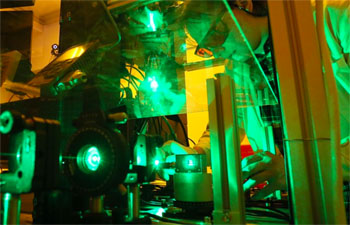Ceramic-Based Laser Scalpel Preserves Underlying Tissues
By HospiMedica International staff writers
Posted on 01 Aug 2016
A compact and powerful ceramic-based laser could be used as a minimally traumatic and inexpensive laser scalpel for surgical operations, according to a new study.Posted on 01 Aug 2016
Developed by researchers at the Moscow Institute of Physics and Technology (MIPT; Russia), Nizhniy Novgorod State University (UNN; Russia), and other institutions, the ceramic used for the laser is made from the rare-earth element lutetium oxide, with added thulium ions (Tm3+:Lu2O3). The added thulium ions help the laser convert energy into radiation with an efficiency of more than 50%, compared to other types of solid-state lasers that only have an average efficiency of approximately 20%.

Image: A laser scalpel (Photo courtesy of ITAR-TASS / Pavel Smertin).
What makes the ceramic laser different from other lasers and more suitable for medical applications is that it generates infrared (IR) radiation with a wavelength that spans about 2 microns--1,966 and 2,064 nanometers--a wavelength that has low penetration and thus does not damage tissues. In comparison, common IR lasers with a wavelength of about one micron show very little absorption and can thus penetrate deeper into biological tissue, causing both coagulation and necrosis. The study was published on May 15, 2016, in Optics Letters.
“Ceramics are a promising type of medium for lasers because they are produced by sintering powders into a polycrystalline mass. In addition, it is easy to alter the chemical composition of ceramics, which in turn alters the laser properties,” said lead author Ivan Obronov, PhD, of the MIPT. “Ceramic lasers have a significant competitive advantage; they are cheaper to manufacture, simpler and more reliable, and approximately four times more compact than holmium lasers. They will be ideal for surgical use.”
Another potential application of ceramic lasers is in the composite industry. Widely used 1-micron lasers are good at cutting metal, but polymers are practically transparent to them. A 2-micron ceramic laser, on the other hand, can effectively cut and engrave plastics, such as composite materials, which are increasingly being used to produce technological equipment such as the wing of the new Russian MS-21 airplane, which is almost entirely made of composites.
Related Links:
Moscow Institute of Physics and Technology
Nizhniy Novgorod State University














